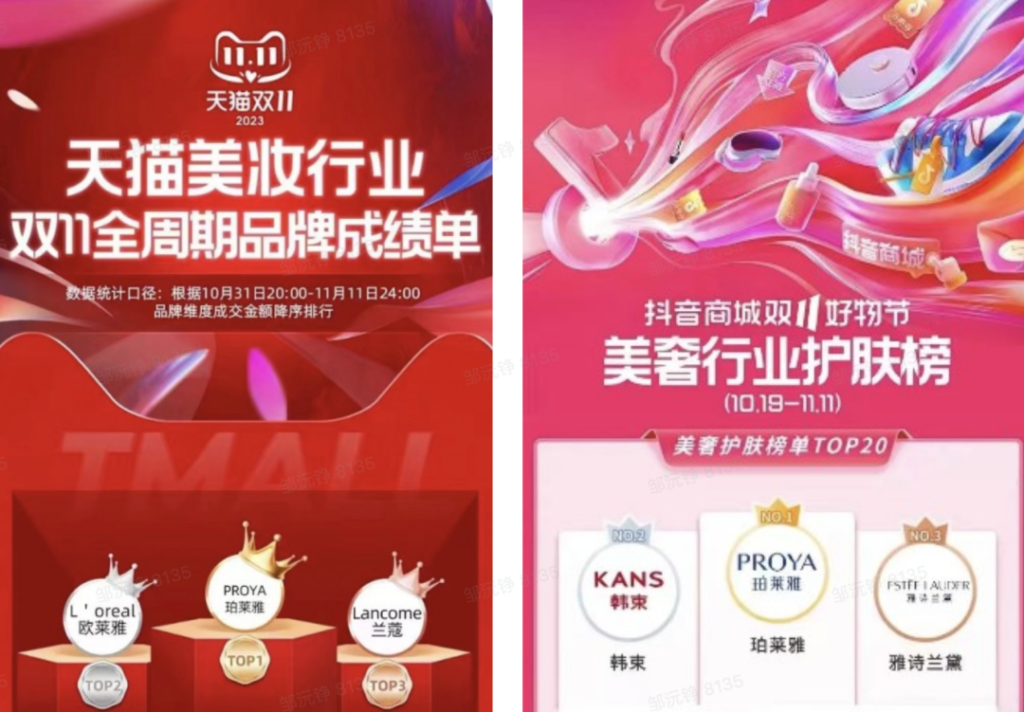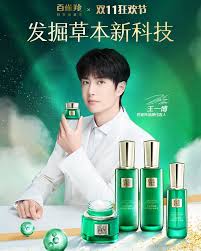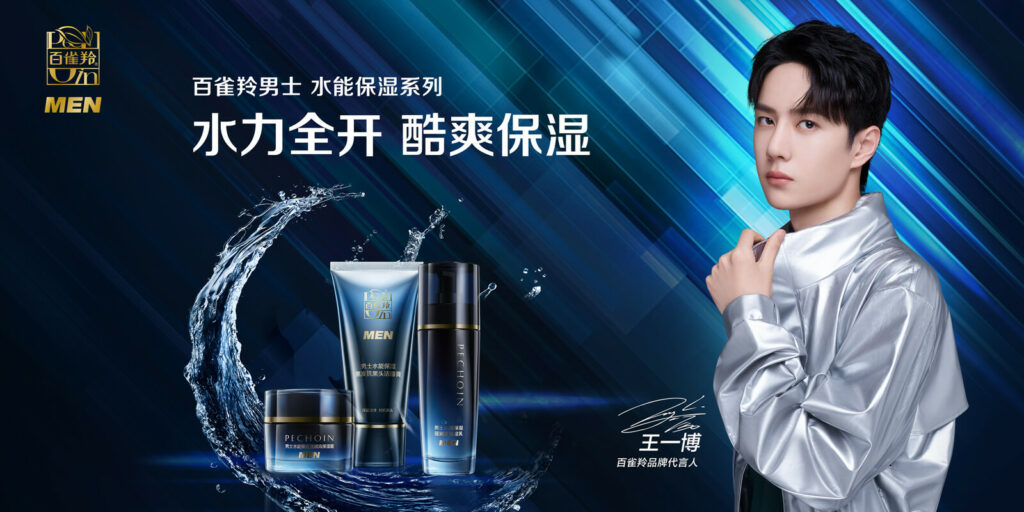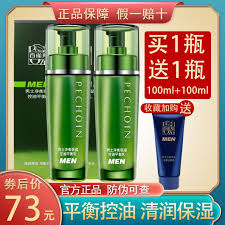Consumer enthusiasm seems to have cooled this year during the Double 11 (Singles’ Day) shopping festival.
Pechoin, the Success of a Chinese Brand
- Establishment and History: Pechoin, also known as Shanghai Jahwa, was established in 1931, making it one of the oldest and most traditional skincare brands in China.
- Brand Philosophy: Rooted in traditional Chinese herbal medicine, Pechoin emphasizes natural ingredients and holistic skincare.
- Product Range: The brand offers a wide array of skincare products, including facial creams, serums, masks, and more, catering to diverse skin types and concerns.
- Market Positioning: Pechoin positions itself as a mid-range brand, affordable yet high-quality, appealing to a broad consumer base in China.
- Innovation and Research: The brand is known for its significant investment in research and development, focusing on integrating traditional Chinese medicine with modern skincare science.
- Award-Winning Brand: Pechoin has received numerous awards and accolades within China for its quality products and contributions to the skincare industry.
- Strong Domestic Presence: It has a robust presence in the Chinese market, with a wide distribution network covering various retail channels, both offline and online.
- Digital Marketing Strategy: Pechoin effectively utilizes digital platforms and social media for marketing, engaging with a younger demographic through platforms like Weibo and Douyin (TikTok in China).
- Eco-Friendly Initiatives: The brand has been making strides in sustainability, focusing on environmentally-friendly packaging and responsible sourcing.
- Global Expansion Goals: While primarily focused on the Chinese market, Pechoin is gradually expanding its reach internationally, aiming to introduce Chinese beauty philosophies and products to a global audience.
Pechoin’s blend of traditional Chinese elements with modern skincare innovations has positioned it as a leader in China’s cosmetic industry, resonating with consumers who value both heritage and efficacy in their skincare choices
Tmall is in difficult situation
A marketer joke I came across a few days ago said: This year’s Double 11 is a bit like a boyfriend’s promise, seemingly forgotten by everyone and quietly passing by.
So, we immediately looked at the data. According to Xingtu Data, during this year’s Double 11 promotional period, the total sales volume of comprehensive e-commerce platforms reached 923.5 billion yuan, with live commerce accumulating sales of 215.1 billion yuan, breaking through one trillion in total.
However, if we only look at the transaction volume of 243.4 billion yuan on the Double 11 day itself, there was a significant drop of 30% compared to last year.

Most of brands do 50% of last year sales in the cosmetics industry.
As the concept of Double 11 has been extended over the years, from a one-night frenzy to now a month-long event, and with the increasing diversity of e-commerce forms and channels, making a vertical comparison might be somewhat inaccurate. But if we focus on the industry, things become clearer. For instance, during this year’s Double 11, the total online sales of beauty and personal care products were about 78.6 billion yuan, a decrease of 4.38% compared to last year.
PECHOIN DOMINATE DOUYIN
Douyin beauty is the eCommerce platform where all Cosmetics brands are investing now
This was Pechoin’s first time topping the Tmall beauty list during Double 11. In fact, signs of this “splendid wealth” had already been showing earlier this year. In the first three quarters, Pechoin, with a revenue of 5.249 billion yuan, overtook Shanghai Jahwa to become the leader in domestic beauty stocks on the A-share market.
Of course, winning in the A-share market was just the beginning, and the achievements of Double 11 really showcased Pechoin’s growth strength. Consequently, articles analyzing Pechoin flooded the market, and at such times, Gift Box is indispensable!

Looking at the Taobao big picture, we find that in the more than ten years since the birth of Double 11, the brand changes in the beauty industry can be roughly divided into three stages:
Stage One: 2013-2014, ‘Taobao brands’ took the lead.
In an era when traditional and international brands focused on offline KA and CS channels, Taobao brands quickly rose to the top, supported by platform traffic, brand promotion, and low-price discounts. For example, Afu, Membrane Family, and Yunnifang.
Stage Two: 2015-2017, ‘Traditional brands’ caught up.
Due to single-channel and traffic ceiling issues, Taobao brands were quickly overtaken by traditional brands, which had relatively complete organizational structures and solid market foundations. Once they learned the online sales tactics already run by Taobao brands, they quickly overtook them. For example, Baique Ling, Chando, and Hanhoo.
Stage Three: 2018-2022, ‘International brands’ arrive, albeit late.
Amidst the rise and fall of Taobao and traditional brands, international brands would not sit idly by. From 2014 to 2016, European, American, Japanese, and Korean brands rushed into Tmall, even starting to launch new products there. After 2018, the top few spots on the Double 11 beauty brand list were strongly divided by L’Oréal, Estée Lauder, and Lancôme. During this period, DTC emerging brands like Perfect Diary, Florasis, Winona, and HFP also had a burst of concentration, but due to the increasing online sales channels, these emerging brands did not significantly impact the domination of international brands.
Pechoin: How Traditional Chinese Wisdom Meets Modern Skincare Innovation
So, as an old domestic brand that started offline, Pechoin was almost dormant for the past decade. Last year, it suddenly landed fourth on the Double 11 beauty brand list, defeating already unnamed Taobao brands and other domestic brands, and this year, it climbed to the top, beating a host of strong international brands to become the deserved light of domestic products.
PART 1: Transformation! Rapid and Accelerated Transformation!
Pechoin’s co-founder, Fang Yuyou, originally a skincare product agent, decided to create his own brand in 2003 after international brands entered the Chinese market, making it difficult for domestic brands to compete as agents. Leveraging his network and experience, along with the then-popular ‘marine ingredients’ selling point, Pechoin rapidly established about 20,000 terminal outlets nationwide within three to four years.
A significant turning point in Pechoin’s transformation was its 2017 IPO. For many years before, Pechoin had made strategic adjustments, shifting from offline channels to brand marketing and differentiated brand matrices, but these were only ‘small steps’.
Before the IPO in 2017, Pechoin was in a tight financial situation. 2018, the first full fiscal year after the IPO, marked the beginning of a dramatic transformation. Simply put, the brand had money to burn on high investments, and with a firm strategic shift, Pechoin embarked on a journey of ‘striding forward’.
Online Marketing: Priority of Pechoin
Focusing Online, Bold Moves Relying on the founder’s experience, Pechoin’s early business model was offline CS channels, gradually building a broad distributor network.
The initial target customer group was chosen considering two aspects: the brand couldn’t be low-end to ensure a certain level of average price, nor could it be too high-end to directly compete with international brands. Therefore, Pechoin chose relatively high-end cosmetic retail chains in 3rd to 5th tier cities as its distribution partners, such as Watsons and Jolse. This defined the customer profile – ‘wealthy ladies’ in small cities.
Pechoin: Crafting a Niche in a Saturated Market with Unique Brand Storytelling
Cosmeticschinaagency analysis; not long after Pechoin had established itself in the offline market, e-commerce in China was already taking shape. By the 2010s, almost everyone had quickly adopted this new shopping mode, and many brands focused solely on online business. Compared to them, Pechoin was late in transitioning online, but its approach was quick, accurate, and ruthless, enabling it to overtake later entrants.
After the IPO, the ratio of Pechoin’s online to offline business rapidly shifted. At the beginning of its 2017 IPO, offline business was still dominant, accounting for 70%, and online business for 30%. By 2020, this scenario had completely reversed, with offline business accounting for 30% and online business for 70%. In 2021, online business became even more decisive at 85%, with offline business shrinking to 15%; this year, online business has exceeded 90%, while offline is less than 10%.
Such a significant channel transformation in a short period is rare for a brand with tens of billions in business, making Pechoin unique. Accompanying this transformation was a significant increase in revenue and net profit, powerfully demonstrating that Pechoin’s strategic decision to shift its offline business drastically online was correct.
PECHOIN A PROFITABLE COMPANY
According to Pechoin’s official financial report, from 2017 to 2022, Pechoin’s revenue soared from 1.783 billion yuan to 6.385 billion yuan, and its net profit attributable to the parent company increased from 201 million yuan to 817 million yuan. Looking at recent performance, revenue in the past 12 months has reached 7.672 billion yuan, and net profit attributable to the parent company has exceeded 1.1 billion yuan. Although this year is not yet over, Pechoin setting a new profit record is a foregone conclusion. In the nearly seven years since its listing, the annual compound growth rate of revenue was 27.53%, and the annual compound growth rate of net profit attributable to the parent company was as high as 32.79%.
Cosmeticschinaagency sees a very successful transformation, but the process was not easy, and it came with costs and pressures.
Offline strategy of Pechoin
Gambling Offline, Transforming Completely Unlike purely online brands like Florasis and Perfect Diary, Pechoin’s expansion into e-commerce, after having a mature offline distribution system, was not just about adding channels. It first faced the issue of interest distribution between different channels.
Pechoin initially entered online channels in two ways: one was to open flagship stores for direct online sales; the other was for some products to be bought out by distributors and then sold in e-commerce platforms.
In the early days of e-commerce platforms, policies to attract brands and consumers, such as policy support and discount subsidies, were quite strong. This led to a clear price difference between Pechoin’s online and offline products, directly affecting offline business and causing strong dissatisfaction among offline distributors and agents.
Pechoin’s Success: A Tale of Quality, Culture, and Market Savvy

the younger consumer base is the result of a two-way effort. On one hand, young consumers are getting to know Pechoin’s products through e-commerce platforms and are willing to try them. On the other hand, Pechoin is also actively approaching young people by understanding their needs and resonating with them emotionally.
This year’s success of Pechoin cannot be separated from the choice and support of young female consumers. Perhaps when they shift their focus from European and American brands, Japanese and Korean brands, and emerging brands to Pechoin, it perfectly illustrates the saying ‘question my mom, understand my mom, become my mom’.
Image
PART 2: Big Products Lead the Charge, New Brands on the Offensive
During this year’s Double 11 Tmall pre-sale phase, Pechoin’s flagship products were exceptionally successful. The Ruby Cream 3.0 sold over 500,000 units in one hour, the Dual-Resistance Mask 2.0 sold over 270,000 units in one hour, and the “Morning C, Evening A” dual-resistance essence sold over 300,000 units. According to the hosts in Pechoin’s live broadcast rooms, during the Double 11 period, the Ruby Cream 3.0 alone achieved 1 billion yuan in sales.
In the beauty industry, focusing on flagship products seems naturally appropriate. Unlike snacks and beverages that need rapid flavor iteration to keep consumers interested, or apparel and jewelry that require constant new releases to win back previous customers, skincare products benefit from stable, long-term effectiveness, formulas, and reputation, which serve as the best calling card for brands.
Since the main brand focuses on flagship products, Pechoin has placed the boost for new products on its sub-brands. These sub-brands primarily venture into niche segments of the beauty industry, such as the makeup brand Caitang, the personal care brand Off&Relax, and Yuefumei, a skincare brand tailored for young skin. These sub-brands have seen growth rates of over 100% from 2021 to 2022.
Stars Products of Pechoin
Flagship Products Pechoin’s strategy for flagship products began in 2019, mainly focusing on ‘serums’. The reason for choosing ‘serums’ among various skincare categories was based on market research by Pechoin: from the supply side, the market already had a rich selection of water and milk products; from the demand side, some consumers were undergoing an upgrade in consumption, demanding higher types and effects from skincare products.
At the same time, in 2019, Pechoin reached cooperation agreements with Lipoture and BASF, securing high-quality raw material supplies, laying a solid foundation for its growth explosion phase.
Thus, in 2019, they focused on niacinamide essence, in 2020 on Ruby essence and Dual-Resistance essence, and in 2021 on Yuanli essence. Each year had a stable leading series, and even these series products could maintain outstanding sales for several years, fully demonstrating Pechoin’s ability to create flagship products.
Cosmeticschianagency learned that Pechoin’s flagship products require about six steps from start to hit, the first three being testing and the last three marketing.
Trend Insights
Before starting trend insights, Pechoin’s brand department usually determines a subcategory and then approaches it from several angles:
- Initial communication with Nielsen, CDNData, and other industry analysis channels to understand the competitive landscape of the chosen subcategory.
- Research both online and offline to identify the characteristics of the user group covered by the subcategory.
- List one or more competitors in the subcategory and analyze their effectiveness.
- Combine consumer product reviews from Tmall, Douyin, and self-media to dig deeper into consumer needs.
- Consider supplier situations and macro trends to select popular ingredients or formulas.
Take the Dual-Resistance essence, for example. In previous skincare concepts, anti-oxidation was already well-known to consumers. In 2020, Pechoin’s research found that anti-sugar was on the rise and likely to be a future trend, so they quickly bet on the concept of “Dual-Resistance” against oxidation and sugar.
Communication with KOLs
After trend insights, the product already has an outline, and cost and selling points are roughly directed. At this point, Pechoin will find some senior KOLs in the beauty industry for a roundtable discussion to get some advice.
Since KOLs often test many similar products for consumer reference, their perspective is closer to consumers, and they have a deeper understanding of competitors. The advice they provide often helps Pechoin make its flagship products more appealing to consumers and find differentiation from other competitors.

Community Testing
Pechoin’s brand department operates some communities, mainly to test products. Before the official launch of a flagship product, several rounds of surveys are conducted in these communities
Innovative Niche Strategies With its flagship products, Pechoin has established a stable foundation. To further boost sales, the brand has adopted a strategy of sticking to the basics while also trying out new, potentially high-return products. Pechoin has been working on a differentiated brand matrix strategy since around 2009, but it wasn’t until the company fully embraced e-commerce that this strategy began to yield significant results.
As a listed domestic cosmetics company, Pechoin owns several brands including “Pechoin,” “Caitang,” “Off&Relax,” “Yuefumei,” “CORRECTORS,” “INSBAHA,” “Youzilai,” and “Hanya.” According to Pechoin’s mid-year report for 2023, these brands started taking off around 2020 and 2021, achieving rapid growth by 2022.
Image Among them, Caitang stands out in the ‘surprise’ category, accounting for over 10% of Pechoin’s overall revenue in just two years since its launch. Caitang’s success is not just a stroke of luck; it plays a pioneering role in Pechoin’s strategy.
Pechoin’s organizational structure is divided into front-end, middle-end, and back-end. The front-end focuses on sales, including offline and e-commerce departments; the middle-end includes the brand department, subdivided into market research, product, marketing, and operations; the back-end covers IT, finance, procurement, HR, administration, and legal affairs.
Interestingly, the entire department that constitutes the Caitang brand is part of Pechoin’s front-end and has its subdivisions like product, brand, and marketing.
Under this clear positioning, Caitang has shown remarkable growth, with revenue of about 530 million yuan in the first three quarters, a 70% increase year-over-year. In the first hour of Tmall’s Double 11 pre-sale this year, Caitang’s sales increased by 315% compared to the previous year. Although Philip Chen, expert in GMA, notes that Caitang has not achieved significant profit yet, with marketing expenses roughly equal to revenue, it has already established significant brand influence. According to a report by CITIC Securities, Caitang’s repurchase rate on Tmall is about 10%, and on Douyin, it reaches 15%.
The success as part of Pechoin’s diversification strategy proves that the brand’s approach to finding a second growth curve through new products is correct.
If sales performance were the only metric and there were already stable existing products, sales managers would typically be reluctant to take on new products. Thus, Pechoin included new product promotion in its sales staff’s performance indicators. For example, if a sales team’s KPI is 10 million yuan, 2 million yuan of it must come from new products, incentivizing the team to allocate resources for marketing and promotion.
Positioning & Pricing of Pechoin
Apart from expanding into other niches with new products, Pechoin has also adopted a ‘reverse price war’ strategy in pricing.

Olivier VEROT expert in cosmetics industry observed a clear increase in the average selling price of Pechoin and its sub-brands, since the beginning of 2021, the average selling price of Pechoin’s products on Douyin has risen from around 140 yuan to about 350 yuan.
Pechoin’s official reports support this, showing an average sale price of 64.36 yuan per skincare product in Q3, a 57.05% year-over-year increase, and 15.63% quarter-over-quarter increase. The average sale price for beauty makeup products was 101.29 yuan per item, and for personal care products, it was 103.66 yuan, both maintaining a rising trend.
Chanmama’s data further showed that in 2021, Pechoin’s products priced between 100-300 yuan accounted for the largest revenue share, over 50%. By 2023, products priced between 500-1000 yuan saw a significant increase in revenue.
Image In summary, flagship products and sub-brands have jointly secured Pechoin’s leading position in the beauty industry.
PART 3: Agile Marketing and Operations Kantar analyzed Chinese brand marketing and found that if a brand’s media budget is cut by 50% for a quarter, brand activity decreases by 19%. If there is no media spend for a quarter, brand activity drops by 52%. And if there’s no media spend for half a year, brand sales directly decrease by 13%.
Although this data cannot be specifically applied to the beauty industry, Pechoin seems to understand this principle well. In the past three years, Pechoin’s marketing expenses were 1.497 billion yuan, 1.992 billion yuan, and 2.786 billion yuan, respectively, with sales expense ratios reaching 39.9%
Conclusion on Pechoin’s Marketing Strategy in 5 Points
- Innovative Product Strategy: Pechoin’s approach of launching flagship products alongside exploring new niches with sub-brands like Caitang demonstrates a dynamic product strategy. This dual approach balances the stability of established products with the excitement and growth potential of new offerings.
- Targeting Younger Demographics: Pechoin has successfully transitioned to appeal to a younger consumer base through e-commerce platforms and content marketing. This strategy has not only broadened their market reach but also rejuvenated the brand, aligning it with current market trends and consumer preferences.
- Digital Transformation and E-commerce Focus: Embracing e-commerce and digital transformation, Pechoin has adeptly shifted its sales focus from traditional offline channels to online platforms. This move has significantly expanded their market reach and allowed for more direct and efficient consumer engagement.
- Strategic Marketing Investments: Pechoin’s increasing investment in marketing, especially in digital and social media platforms like Douyin, reflects an understanding of the evolving media landscape. This shift ensures the brand remains visible and relevant in a highly competitive market.
- Price Positioning and High-Value Perception: Pechoin’s ‘reverse price war’ strategy, elevating the average selling price of its products, has successfully positioned the brand as a high-value proposition in the market. This approach not only enhances the brand’s premium image but also aligns with the growing consumer willingness to invest in quality beauty products.
Overall, Pechoin’s marketing strategy showcases a blend of traditional business acumen with modern digital savvy, ensuring the brand stays relevant and continues to grow in China’s rapidly evolving beauty market.
Read more

